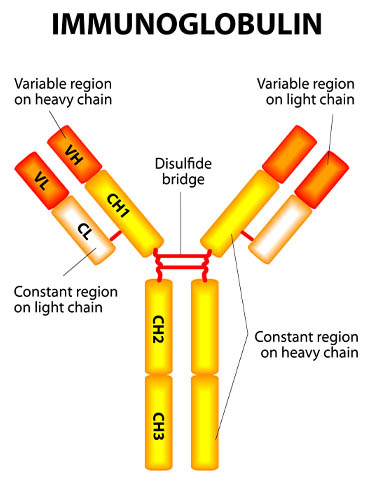What are Isotype Controls?
A monoclonal isotype control is a negative control antibody from the same species, immunoglobulin class, subclass and light chain as the primary antibody used in a particular scientific application. The isotype control is used to differentiate a positive signal or result over background noise or other nonspecific interactions, as seen in assays or In vivo functional studies. Isotype control antibodies are developed like specific monoclonal antibodies, but the immunogens used are unrelated to like proteins or epitopes present in the target organism or species, to assure there are no specific antibody-antigen interactions.
Why is it Important to Use Isotype Controls?
When using monoclonal antibodies in applications such as In vivo functional pre-clinical animal studies, or In vitro assays such as flow cytometry, immunohistochemistry, fluorescent immunocytochemistry, western blotting, ELISA, or Luminex, the appropriate isotype control antibody is highly recommended to generate reliable data. Primary monoclonal antibodies can interact both specifically and non-specifically with Fc receptors on cells, blood proteins, cellular proteins, carbohydrates, lipids and tissues causing background staining signals. The non-specific signal from the isotype control antibody, used at the same concentration or dose as the specific antibody, is used to differentiate a positive signal or result generated by the specific monoclonal antibody.
How Should Isotype Controls for In vivo Studies be Selected?
An isotype control antibody should be matched to the same host species, class, subclass and light chain as the primary antibody being used in the particular application (Example: Mouse IgG1к or Mouse IgMλ). If the primary monoclonal antibody is conjugated with a fluorescent or enzymatic reporter molecule, the isotype control antibody should be conjugated with the identical reporter molecule. In the case of In vivo functional grade isotype control antibodies, selection should also be based on purity specifications such as low endotoxin level, presence of aggregates, leached Protein A and other contaminants that might cause false negatives or positives during preclinical studies. Leinco Technologies offers high-purity isotype control antibodies for your specific applications.


Originally posted by Leinco Technologies Inc. on: https://www.leinco.com/isotype-controls/
Caltag Medsystems is the distributor of Leinco Technologies’ products in the UK and Ireland. If you have any questions about these products, please contact us.
